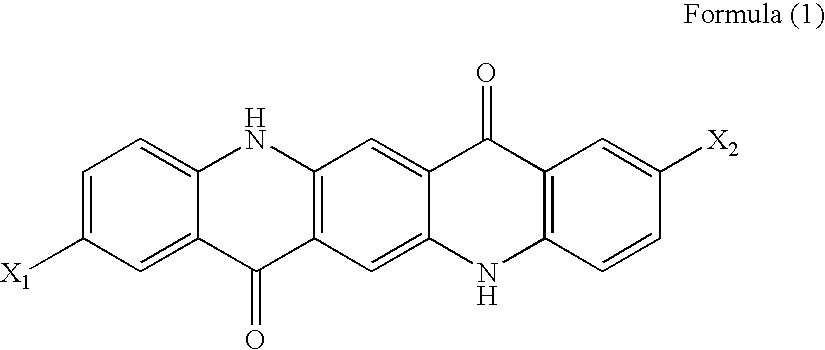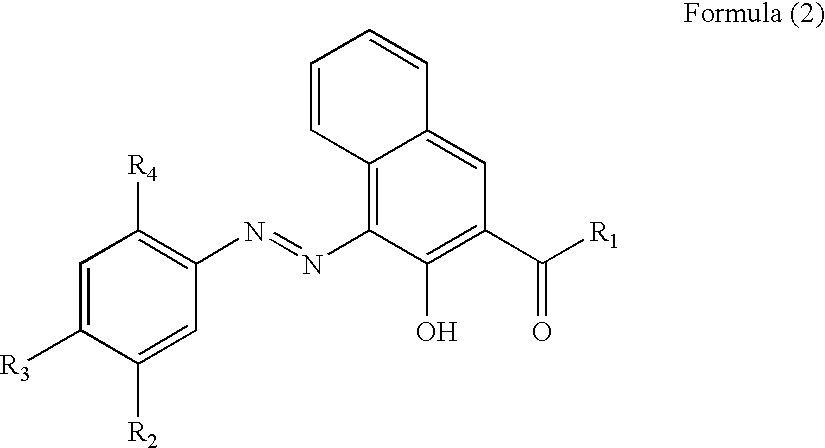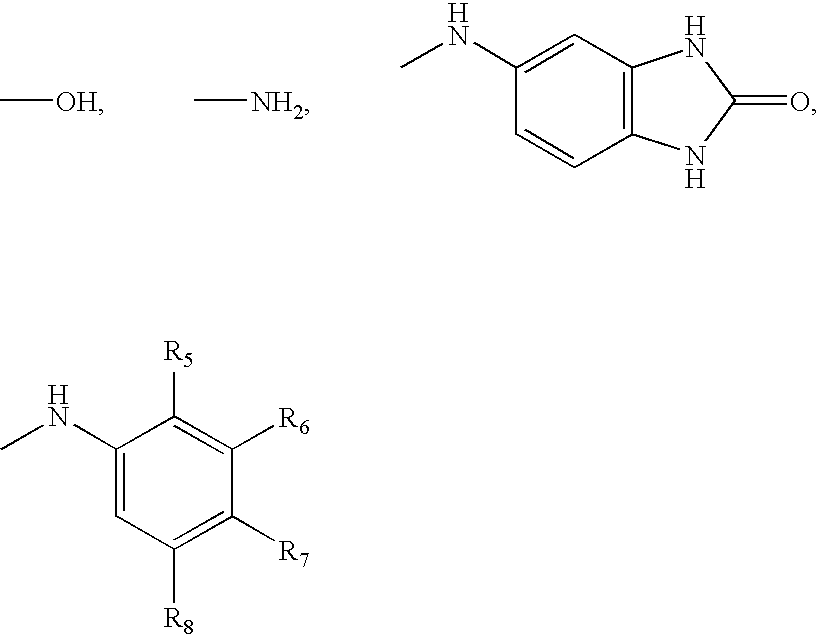Magenta toner for developing electrostatic images, process for production thereof, developer and image-forming method
a technology of electrostatic images and toner particles, applied in the field of magenta toner for developing electrostatic images, process for production thereof, developer and image-forming method, can solve the problems of irregular shape of toner particles produced by the kneading-pulverizing process, deterioration of image quality, and difficulty in intentionally controlling these factors at desired degrees
- Summary
- Abstract
- Description
- Claims
- Application Information
AI Technical Summary
Benefits of technology
Problems solved by technology
Method used
Image
Examples
example 1
First Step
Preparation of Colorant Dispersion (1)
[0106]
Magenta pigment 50 parts by mass(Mixed crystal pigment consisting ofC.I. Pigment Red 122 andC.I. Pigment Red 150 in a weight ratioof 55:45 / This mixed crystal pigment isobtained by dissolving the two pigments insulfuric acid at room temperatureand adding the pigment solution in sulfuricacid to 10° C. water of anamount eight timesthat of the solution to perform hydrolysis.)Nonionic surfactant 5 parts by mass(trade name: Nonipol 400, manufactured bySanyo Chemical Industries, Ltd.)Ion-exchange water200 parts by mass
[0107]The materials listed above are mixed, dissolved and dispersed by means of a high-pressure impact dispersing apparatus Ulthimaizer (trade name: HJP30006, manufactured by Sugino Machine Ltd.) for about 1 hour. Thus, colorant dispersion (3) containing a colorant dispersed therein is prepared. The average particle diameter of the colorant in colorant dispersion (3) is 125 nm.
Preparation of Dispersion (1)
[0108]
Styrene370 ...
example 2
Preparation of Colorant Dispersion (2)
[0120]
Magenta pigment 50 parts by mass(Mixed crystal pigment consisting of C.I.Pigment Red 122 and C.I. Pigment Red269 with a weight ratio of 50:50 / This mixedcrystal pigment is obtained by dissolvingthe two pigments in sulfuric acid at roomtemperature and adding the pigmentsolution in sulfuric acid to 10° C.water of an amount eight timesthat of the solution to perform hydrolysis.)Nonionic surfactant 5 parts by mass(Trade name: Nonipol 400, manufacturedby Sanyo Chemical Industries, Ltd.):Ion-exchange water200 parts by mass
[0121]The materials listed above are mixed, dissolved and dispersed by means of a high-pressure impact dispersing apparatus Ulthimaizer (trade name: HJP30006, manufactured by Sugino Machine Ltd.) for about 1 hour. Thus, colorant dispersion (3) containing a colorant dispersed is prepared. The average particle diameter of the colorant in the colorant dispersion (3) is 155 nm.
[0122]In Example 1, colorant dispersion (2) is used for ...
PUM
| Property | Measurement | Unit |
|---|---|---|
| volume average particle diameter | aaaaa | aaaaa |
| particle diameter | aaaaa | aaaaa |
| particle diameter | aaaaa | aaaaa |
Abstract
Description
Claims
Application Information
 Login to View More
Login to View More - R&D
- Intellectual Property
- Life Sciences
- Materials
- Tech Scout
- Unparalleled Data Quality
- Higher Quality Content
- 60% Fewer Hallucinations
Browse by: Latest US Patents, China's latest patents, Technical Efficacy Thesaurus, Application Domain, Technology Topic, Popular Technical Reports.
© 2025 PatSnap. All rights reserved.Legal|Privacy policy|Modern Slavery Act Transparency Statement|Sitemap|About US| Contact US: help@patsnap.com



